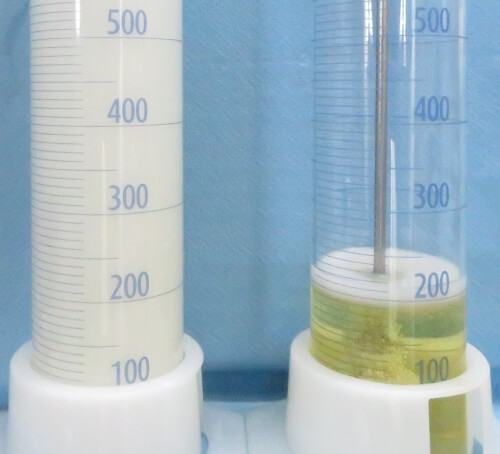


Foaming properties of oil
The foaming properties of oil describes the capability of a lubricant, how strongly it tends to foam when exposed to air or how quickly air bubbles are dismantled. The foaming properties of an oil can be measured in the laboratory using the ASTM D 892 and ISO 6247 test methods. In certain applications, such as hydraulic systems or turbines, the foaming property of an oil is an important value.
Problems due to foaming in the oil
Air bubbles impair the lubricating and cooling performance of a lubricant and hinder optimal power transmission. Energy losses and a reduced service life of the components are the result. Cavitation and the so-called diesel effect also occur.
In the diesel effect, air bubbles heat up under strong compression until they self-ignite. The phenomenon depends on the size of the air bubbles and the speed of the pressure increase. Similar to the diesel engine, small explosive reactions occur due to the collision of oxygen from the air bubbles and hydrocarbons of the oil. Combustion occurs only partially due to the low oxygen content in the air bubbles, producing soot particles that lead to a dark discolouration of the lubricant.
The lubricant itself ages more quickly due to the introduction of air. In addition, foam leads to abrasive wear. Furthermore, surface foam can cause leakage if foam penetrates seals and vent holes. Both processes bear risks to the environment because they lead to oil discharge.
The entry of air, impurities, oxidation, but also special design-related conditions can lead to foam formation during operation.
Lubricating oils contain air, which in dissolved form has no negative effects on the lubricating ability and the system components. However, if pressure and/or temperature fluctuations occur, dissolved air can be released and air bubbles are formed. In addition, the entry of air during operation is difficult to avoid.

Contact
